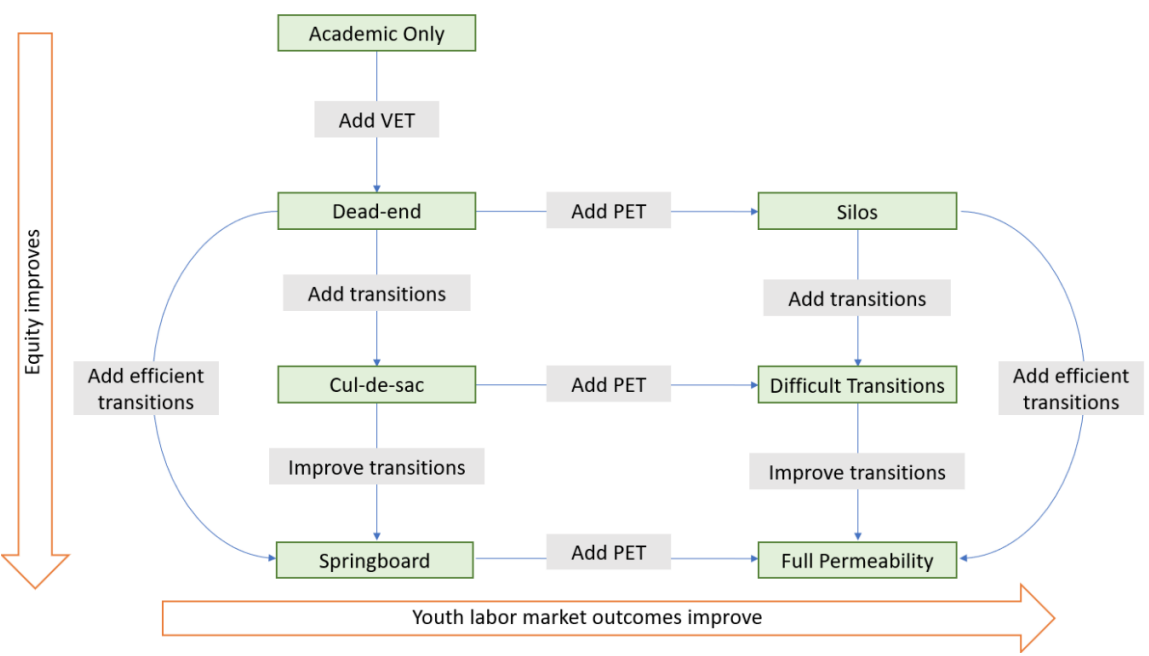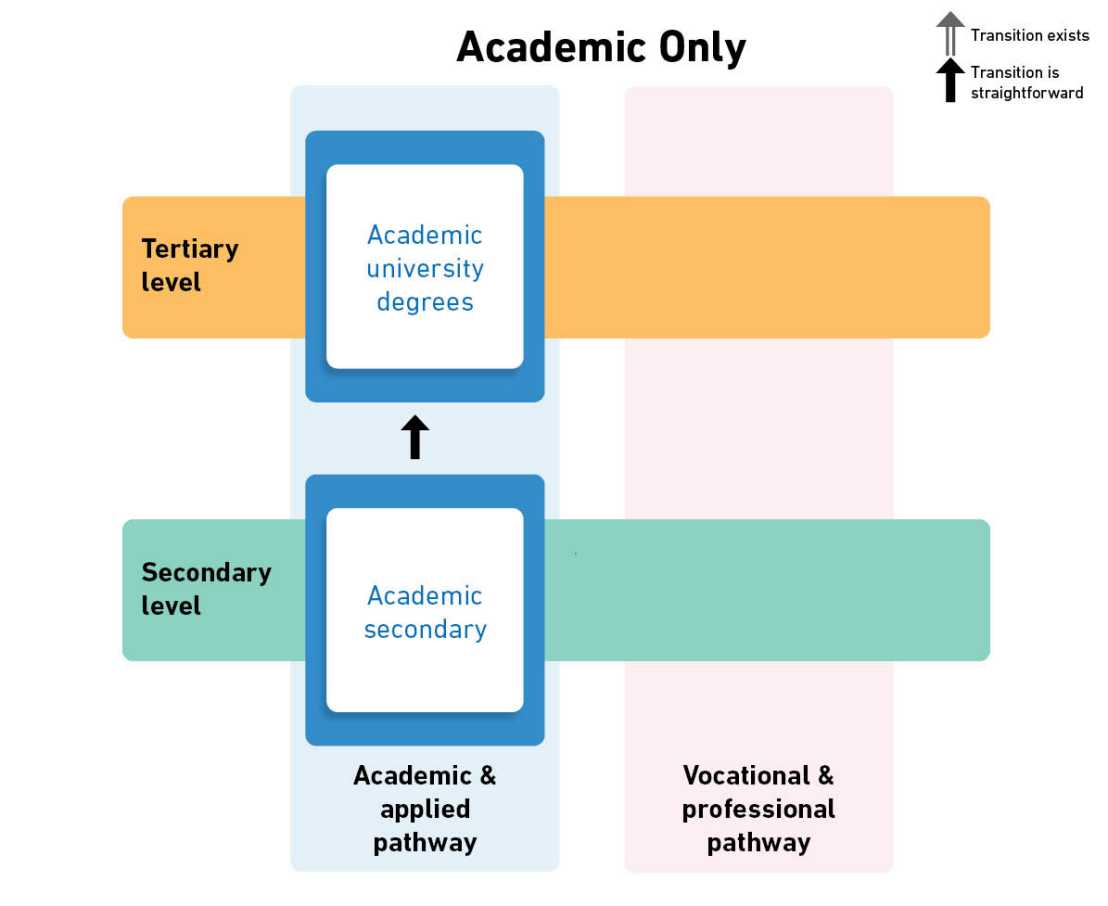Building better education systems: assessing, improving, and sustaining permeability (Permeability blog 3/3)
Now that we learned what permeability is and why it matters, it's time to apply this knowledge. Part three of our blog series provides a practical guide on assessing, improving, and sustaining education system permeability.
By Marit van Dekken & Katie Caves
We’ve cracked the code: the best education systems are permeable. But what’s next? How do we turn this into tangible improvements?
The first step is assessing the current permeability of an education system. Caves et al. created a simple decision tree for this purpose. While this tool offers a useful simplified view, it’s not a real measurement. It mainly serves as a conversation starter about permeability:
- It helps understand access and opportunities within an education system;
- It allows you to identify strengths and weaknesses regarding permeability;
- It can help initiate discussions on improving permeability.
Permeability decision tree
Let's first have a look at the permeability decision tree and its different steps. We'll then dive into how we can start to improve and sustain permeability.
Before identifying which permeability type best aligns with an education system, we must gather some essential information. Key sources include:
- external page ISCED mappings
- CES Factbooks Education Systems
- National institutions like the national statistical office
- International organizations that gather data on education systems like external page UNESCO's Institute for Statistics, external page World Bank's Education Statistics, and external page Eurostat.
Using these sources, you can create a draft of what you think is happening with your system’s permeability and seek input from a variety of local experts, including those from ministries of education and labor, employer associations, different school types, and other stakeholder groups.
Improving permeability: choices and tradeoffs
We now know how to make an initial permeability diagnosis. So where do we go from here?
For every other permeability type, thinking about a potential reform involves making different choices and tradeoffs. These possible choices are summarized in the figure below.

They may seem daunting, but don’t despair! Generally, there are two possible directions:
After considering these factors for the direction of a potential reform, there are two main options:
Sustaining permeability: hurdles along the way

We want to make sure we go beyond our first steps and keep on moving towards not only developing, but also sustaining a more permeable education system. There might be a few hurdles along the way, but they can be overcome!
- Education reform isn’t something that can be solved quickly. Transitioning to a fully permeable system may take generations, longer than most government administrations last. It requires commitment from a wide variety of stakeholders to succeed.
- Any restructuring of an education system will inevitably create winners and losers. It’s crucial to handle these dynamics with care and sensitivity.
- Systemic reform, especially in terms of permeability, requires a lot of coordination. It's important to have a clear plan, and well defined roles and responsibilities for all stakeholders.
- Even the strongest education systems need to change regularly, because they must adapt to changes in society and the economy. This applies to permeability too: establish mechanisms that allow you to identify and resolve any barriers or problems that might arise.
It's important to understand that permeability isn’t a final destination; it’s an ongoing journey towards a more equitable education system. Each time a system is changed and updated, its permeability can be reevaluated again. The most important thing is to not become complacent. Permeability needs attention, active monitoring, and continuous reform!

